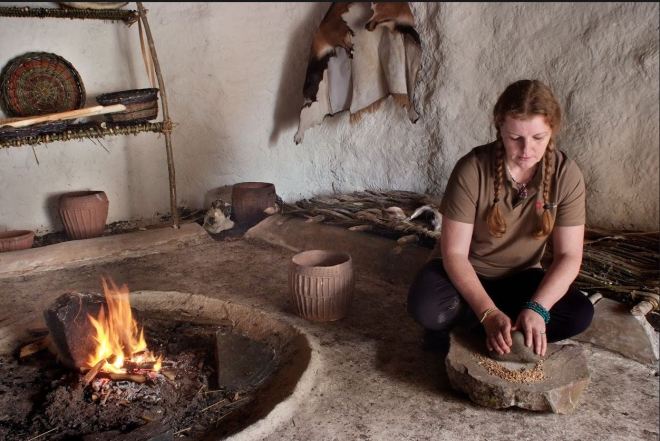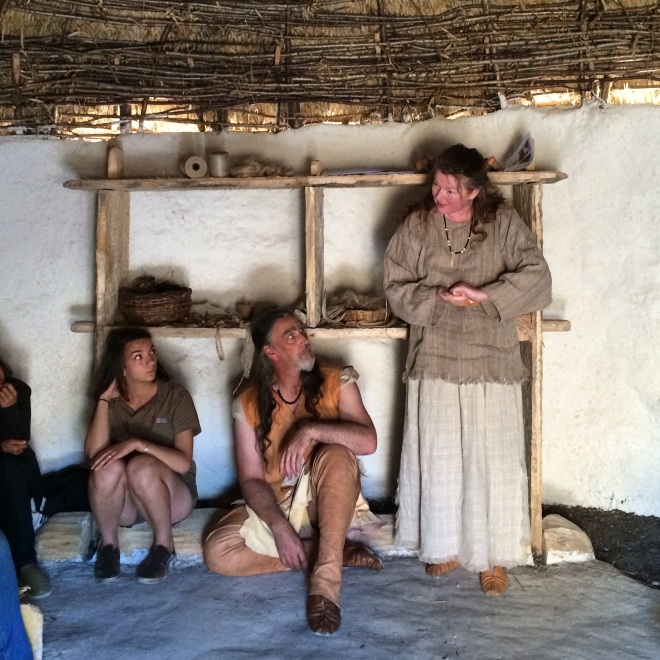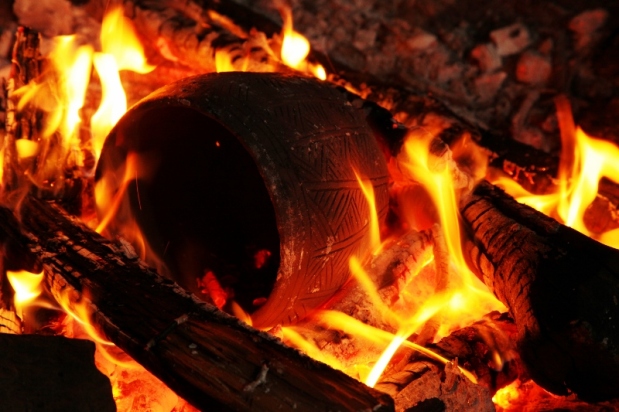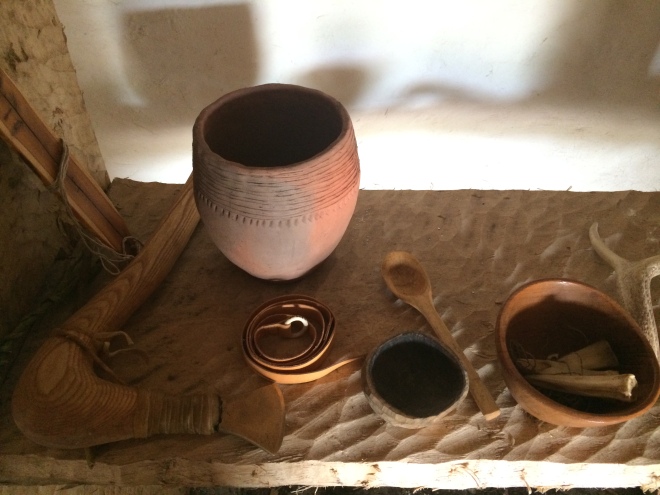
Wendy in one of the houses she built
After a few weeks holiday following the completion of the Neolithic build I find myself back at the houses eagerly attending some volunteer workshops. The workshops are aimed at giving us an understanding of the artefacts displayed within the houses, which in turn will arm us with the knowledge to interpret them to visitors.
My first workshop was with Sally and Gareth who gave a wonderful workshop about the organic clothing and other useful items within the buildings, for example, the cloak made out of goatskins, the tunic made out of nettles and the tools made from bone and antler.
Not only did we find out about the origin of the materials both physically and within history, we were shown how to make the items ourselves. I chose to make a domestic needle out of bone, working away with flint to encourage an eye to appear, sharpening the needle and finishing it off with a sanding” down using dried dogfish skin. We were shown several different materials to use as thread including sinew and hemp fibre.
By handling all the materials required to make the artefacts and then actually using them to attempt to replicate our ancestors’ everyday Items is quite an experience.
To top it off we were sat in the houses themselves working in a small group and this really made the houses make sense. There’s nothing quite like the sound of flint scraping and general chitter chatter and laughter to complete the houses and really bring them to life.
Or that’s what I thought, until I attended a brilliant fire making and management workshop given by Guy Hagg. This was another really informative session with history, science and the practicalities of fire use thrown in.
So now I feel I am able to talk about making clothes using the natural materials that were available to the people who would have lived in the original Neolithic houses. I can discuss the various ways these people may have made fire, carried it with them and managed it in their homes.
With all the ancient and modern methods demonstrated during these volunteer training sessions, I find myself in awe of Neolithic people and their determination to survive.
Next to the often desired time machine, I think this hands on experience of working within the houses themselves (which I helped build!) affords us an unprecedented opportunity to get closer to and understand ancient people as contemporaries rather than distant relations.
Next up for me is flint knapping! No one can say volunteering in the houses is going to be mundane!
Read about Wendy’s experience of building the Neolithic houses.









 Once the pot has been finished and decorated I must consider how I will fire it. Received wisdom is that all prehistoric pottery in Britain was fired in an open hearth rather than a kiln, although the finest beakers show signs that the hearth allowed for considerable control of the fuel and air supply, like a rudimentary kiln. This was also the case for the collared urn, although the carinated bowl was fired in close contact with the fuel in an open fire. Again in each case I try to emulate the original conditions as closely as possible. The resulting replicas do not look as they do after four or five thousand years in the ground, but rather as they did on the day they were made.
Once the pot has been finished and decorated I must consider how I will fire it. Received wisdom is that all prehistoric pottery in Britain was fired in an open hearth rather than a kiln, although the finest beakers show signs that the hearth allowed for considerable control of the fuel and air supply, like a rudimentary kiln. This was also the case for the collared urn, although the carinated bowl was fired in close contact with the fuel in an open fire. Again in each case I try to emulate the original conditions as closely as possible. The resulting replicas do not look as they do after four or five thousand years in the ground, but rather as they did on the day they were made. 
